How Gen Z Presents Major Implications for Workplace Design
In this EXCLUSIVE Q&A, Robin Weckesser, president and founder of a3 Workplace Strategies, reviews how the new kids in the workplace differ from previous generations and discusses how corporate executives can respond.
Robin Weckesser, president and founder of a3 Workplace Strategies.
Look for balance in workplace solutions, not “one size fits all.” That is one of the solutions provided by Robin Weckesser, president and founder of a3 Workplace Strategies, when chatting with GlobeSt.com about Generation Z and workplace design solutions. Check out the below Q&A for more on the subject and how you can prepare your office for both generations.
GlobeSt.com: What’s the big deal about Generation Z?
Robin Weckesser: While Millennials at work continue to make noise and generate headlines, quietly falling under the radar is the fact that Generation Z—those born between 1994 and 2010—is now the largest portion of the U.S. population.
Other generations have of course entered the workforce over the years, but this is different. While Baby Boomers continue to retire, and Millennials assume more management positions, the “new kids on the block” are beginning to assert themselves and impose their values on workplace transformation strategies, including the ubiquitous open office.
GlobeSt.com: How does Gen Z differ from other generations?
Weckesser: Gen Z is similar to Millennials in that both groups enjoy multi-tasking and have an affinity for technology, but there are some telling differences. For example, Gen Zers were very young or not born when the 9-11 attacks occurred. They have no idea what it’s like to live in a world without terrorism, and this this may cause them to feel unsettled and circumspect.
Even more so than Millennials, Gen Z is unique in that technology may be their sixth sense. Gen Zers are digital natives born into a digital world. They grew up with smart phones, iPads, broadband, and Instagram, along with all the latest techie trends that they are quick to adopt. They are intuitive about social and digital media, and integrate all the latest apps into their socialization patterns.
GlobeSt.com: What do studies tell us about Gen Z?
Weckesser: Studies about Gen Z reveal some intriguing stats:
- 77% of 12-17 year-olds owned smart phones in 2015. They spend more than three hours a day using computers for purposes other than schoolwork. About three-quarters use their smart phones daily, more than they watch TV.
- They will likely generate $44 billion in annual spending, and this will affect the purchase of toys, apparel, food, entertainment, TVs, mobile devices, and, of course, computers.
- They are a self-conscious generation that wants to be in the know at every moment. If it’s not on social media, it didn’t happen.
- Gen Z uses social media to strengthen bonds with friends and develop new friends. They interact with people who they otherwise would not have met in the real world.
- Topping the list of employee benefits valued by Gen Zers is workplace flexibility.
- Gen Z students self-identify as being loyal, compassionate, thoughtful, open-minded, responsible, and determined.
GlobeSt.com: What about collaboration at work?
Weckesser: Generation Z college students prefer intrapersonal and independent learning over group work. Solo work preference translates to workplace behavior, as only 38% said the ability to collaborate in the workplace was key to enabling their best work. This runs counter to most Millennials who generally thrive in collaborative environments enabled by open workplaces.
GlobeSt.com: How does Gen Z shape the workplace and impact its design? And how should facility managers and corporate executives respond?
Weckesser: Here are some tips:
- Look for balance in workplace solutions, not “one size fits all.” Flexible workplace design will likely include more “hybrid” offices that combine private space for heads-down work as well as open areas that promote collaboration.
- Be willing to train and educate staff regarding the benefits of different work settings. This begs the need for change management programs.
- Engage forward-thinking, experienced workplace consultants. The evolving, multi-generational workplace has spawned a new breed of contemporary project managers. These specialists embrace a holistic approach that accents sensitivity to all demographics in the workplace—and strives to find common ground.
GlobeSt.com: What lies ahead?
Weckesser: 37% Gen Z’s polled aspire to be a corporate leader, and 49% expect to work in their current industry their entire career. So we need to welcome a new wave of decision-makers.
Gen Zers are demonstrating that they dream big and have a “we can change the world” attitude. So maybe some DNA from the Baby Boomers has been transferred, which isn’t a bad thing.
GlobeSt.com: How can we prepare?
Weckesser: Drastic change won’t occur overnight, but it’s coming, and we need to be prepared. We need to consider a new way of thinking to accommodate “new kids” and “older kids,” encouraging them to play nice in the sandbox. It’s all about adaptation and innovation for all generations working together. It’s about the need to be sensitive to different styles while we’re still mindful of common corporate objectives and the bottom-line.
About a3 Workplace Strategies
a3 Workplace Strategies is a workplace consulting group based in San Jose and serving companies throughout the United States and worldwide. The firm provides a full range of project management and facilities management services, including strategic planning; change management; site selection; design, construction, and relocation oversight; space programming; and open office/collaborative environments. For more information, visit www.a3workplacestrategies.com.





Sorry, the comment form is closed at this time.